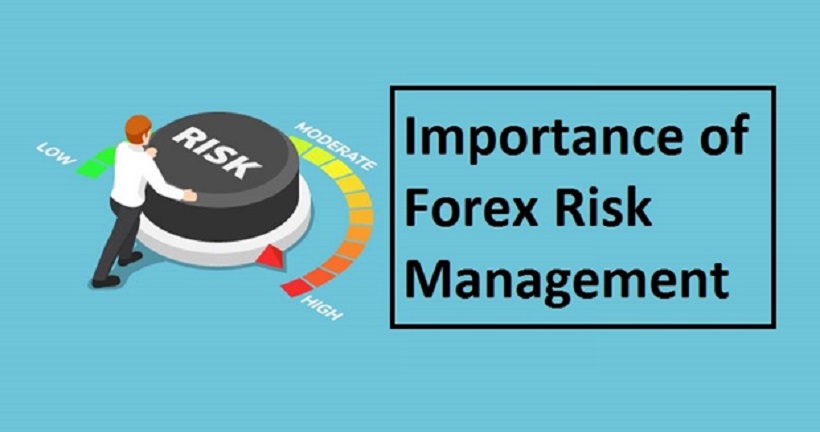Economy
How to Control the Risks in Trading?

Risk control is one of the dominant aspects to consider when trading. Of course, if you choose to trade with Exness MT4, the risks get reduced to a minimum. In any case, let’s cast a look at the key steps to take to minimize the risks and calculate their probability when you get into trading.
What’s Risk in Trading and Why You’d Control It Every Second
A trading risk (aka risk in trading) is presented by certain events in the forex market, to subsequently negatively affect the trader.
There may be some changes in the exchange that will ultimately lead to a loss of money.
There are strategies in the forex market that are based on risk management.
Risk at forex trading can be calculated using the following formulas. There are certain formulas and rules for determining risks, for example:
Risk per Trade = Purchase Cost — Stop
And this is the formula for calculating the risk for all trading capital, expressed as a percentage:
Risk = Expected losses in the trade / Equity x 100
This formula will help you comply with the basic rule of risk management, which allows you to risk no more than 2% of your trading capital (or portfolio) per trade.
Risk management is primarily a process of preliminary analysis of all transactions for possible risk and potential profit.
Before making a deal on the stock market (opening a position), the fundamental condition is to determine the risk arising from this.
Control over the risks, or simply risk management, largely determines the likelihood of a trader’s trading success in general, since it allows a competent approach to opening and maintaining positions under risk conditions.
Often, it is precisely the optimization of a position based on the level of risk that is acceptable for a trader that is the main criterion for successful trading.
Frequently, newbies, having no idea about risk management, overestimate the risks and lose their deposit, which often ends in frustration in trading.
Also, without working with risk management, it is extremely difficult to create a successful trading strategy.
Watch News and Stay up to Date
Being guided by fundamental analysis or simply watching news and staying up to date news plays the role of a ’fulcrum’:
- Following the publication of macroeconomic indicators
- Statements of the largest international and
- National financial organizations,
a trader is able to predict a decrease or increase in the rate of a particular currency. This is how all forex professionals work.
But even if a trader is not going to become a professional, he may well define for himself several sources of information that he will use to stay in the know.
The formula for success in the forex market is quite simple. To be in profit, it is necessary to
- Correctly interpret the information received
- Draw the correct conclusions from it, and
- React correctly by opening certain deals.
There are several basic information flows that a trader can use. The most convenient help is the financial news feed, which is equipped with all major online trading platforms.
As a rule, on this tape the specialists of the brokerage company or their partners—business news agencies post in real time all the news that are important for the Forex market.
Stay Stick to the Plan According to Budget
Sticking to the budget you planned is actually one of the fundamental parts of the control over your risks at the forex market.
There are several universal tips for applying risk management in trading that can help improve the trading efficiency of a trader who uses them correctly:
- Before starting trading, it is necessary to draw up a trading plan that describes in detail the trader’s behavior during the trading day, which helps to partially neutralize the emotional component of trading.
- Use only strong signals in trading. You shouldn’t try to trade from a reversal on every random correction.
- It is necessary to limit your losses in each trade and plan the expected profit using stop and take profit orders.
- Do not overexpose losing positions. Stop orders not only help to close a losing trade on time, they are also a kind of indicator of the correctness of the forecast. If the forecast has obviously not been confirmed, one cannot hope for a price rollback over time, otherwise one can get into the opposite trend position and lose the entire deposit.
- Do not try to trade aggressively, especially if you have no experience. It is not by chance that professional traders choose the risk threshold for a transaction at the level of 2% of the deposit—it is best to stick to it until you gain a certain experience in trading.
Each of the tips listed above is applied to the way you distribute your budget in the process of trading. Thus, planning your budget is paramount.
Take Profit-Stop Loss Points
A successful trading system consists of two parts:
- The first is the loss limitation, and
- The second one is the timely profit taking.
Sometimes traders’ strategies assume a strict ratio of the length of positions such as stop and take profit, for example, 1 to 3. Thus, a stop of 10 points will have a take profit of 30.
The ratio can be any, but you should not set too long take profits without a good reason—often the overestimation of price drivers leads to the fact that the trader does not record a solid profit, and the reversal occurs before reaching a long take.
At the same time, it should be remembered that in this case, the take profit must necessarily exceed the stop, since a rare strategy allows a trader to trade without losses, and short stops suggest that, for example, two losing trades can be compensated by one profitable one.
However, in many strategies, the exit point is determined in a different way. Signal trading is one example.
In accordance with this strategy, a trader enters a position by a signal and expects a return signal to exit. In such strategies, the ratio of possible profit and loss is quite large, since the price often passes a significant number of points before reaching the opposite signal.
However, this position has a significant disadvantage: sometimes the return signal is not received at all.
Another strategy involves placing profits near resistance levels, where the likelihood of a reversal is very high. Most often, this option is preferred by experienced traders who are able to correctly determine the levels.
Exnessgroup wishes you successful trading in 2022!
Economy
Naira May Remain Under Pressure in 2026—Yemi Kale

By Adedapo Adesanya
Top economist, Mr Yemi Kale, has projected that the Naira will remain under pressure against the United States Dollar in 2026, due to some external pressures.
Mr Kale, who is currently the Senior Economist at Africa Export-Import Bank (Afreximbank) and formerly the Statistician-General of Nigeria, made the disclosure while delivering his keynote speech at the FirstBank Nigeria Economic Outlook 2026.
He outlines three scenario-based forecasts for the Dollar/Naira exchange rate, reflecting varying assumptions around oil prices, foreign-exchange (FX) inflows, inflation trends, and policy consistency.
Under the baseline scenario, the Naira is projected to trade around N1,350/$1–N1,450/$1 by the end of 2026.
According to the outlook, key assumptions include moderate improvement in Nigeria’s FX reserves and oil export revenues, relative stability in FX policy by the Central Bank of Nigeria (CBN), gradual decline in inflation, and the absence of major external shocks, such as a sharp oil price collapse or a global Dollar surge.
It is projected that by June 2026, Naira will trade at approximately N1,313 to the Dollar, and around N1,340/$1 by December 2026.
The outlook notes that currency risks remain elevated, justifying a cautious baseline forecast rather than expectations of strong appreciation.
It noted that the Naira would remain under pressure but avoid a sharp collapse, pointing to moderate depreciation or a mild recovery from weaker levels.
In a more positive outlook, the Naira could strengthen to between N1,200 and N1,300 per Dollar by the end of 2026.
Key assumptions include strong oil price recovery or successful export diversification, effective FX reforms by the CBN, improved liquidity, and narrower gaps between official and parallel markets, and significant decline in inflation, restoring investor confidence.
He noted that this could be buoyed by increased FX inflows from oil, gas, remittances, and non-oil exports
A weaker global US Dollar, which would support emerging-market currencies.
According to the outlook, even at N1,200, the Naira would remain significantly weaker than historical benchmarks, underscoring persistent structural challenges.
In the worst-case scenario projects the Naira could weaken to N1,550–N1,650 or beyond by the end of 2026.
Key assumptions are weak oil prices or production disruptions reducing FX inflows, deepening FX liquidity crisis and forced currency devaluation, and rising inflation, widening fiscal deficits, and erosion of investor confidence
While extreme, the scenario remains plausible given Nigeria’s structural vulnerabilities, including import dependence, FX mismatches, and inflationary pressures.
The outlook projects a gradual rebuild of Nigeria’s external reserves toward $45 billion by 2027, driven by higher remittance inflows, improved oil receipts, and portfolio investment re-entries.
He noted that policy consistency, particularly transparent FX management and fiscal discipline, is critical to sustaining investor confidence and strengthening Nigeria’s balance-of-payments position.
He added that local refining capacity could also help reduce reliance on petroleum imports, save billions of Dollars in FX annually, while export growth in agriculture, manufacturing, and services under the AfCFTA is expanding Nigeria’s non-oil FX base.
Economy
Seplat Welcomes Heirs Holdings, Heirs Energies as Shareholders

By Aduragbemi Omiyale
Heirs Energies Limited and Heirs Holdings Limited have been welcomed to Seplat Energy Plc as shareholders after acquiring the stakes held by Etablissements Maurel & Prom S.A.
Heirs Energies and Heirs Holdings, both owned by a celebrated former banker, Mr Tony Elumelu, bought the 20.07 per cent equity stake of Manrel and Prom some days ago.
The deals covered a total of 102.4 million shares of Seplat Energy, held by Maurel and Prom, a founding investor of Seplat Energy.
Confirming this transaction, the chief financial officer of Seplat, Ms Eleanor Adaralegbe, in a statement to the Nigerian Exchange (NGX) Limited, said Heirs Energies acquired 86,639,377 ordinary shares of the organisation, while Heirs Holdings purchased 33,760,623 ordinary shares, making them one of the major shareholders of the energy firm.
“M&P was a founding investor in Seplat Energy and remained one of the Company’s largest shareholders until now.
“The company recognises and appreciates the significant role M&P has played in supporting Seplat Energy’s growth and development into a leading independent Nigerian energy company and wishes M&P every success in its future endeavours.
“Seplat Energy is pleased to welcome Heirs Energies Limited and Heirs Holdings Limited as shareholders and looks forward to working together to continue advancing Seplat’s strategic objectives and long-term ambition of becoming a leading African energy champion,” the statement signed by Ms Adaralegbe stated.
Economy
FG Won’t Tax Bank Balances—CITN

By Adedapo Adesanya
The Chartered Institute of Taxation of Nigeria (CITN) has dismissed claims that bank balances are taxable under Nigeria’s new tax regime, saying only certain electronic transfers attract a N50 stamp duty and that the reforms are designed to shield low-income earners.
The Chairman of the taxation body for Abuja District, Mr Ben Enamudu, made this known while speaking in an interview with Arise News on Tuesday as part of efforts to educate and correct misconceptions around the new regulations.
Mr Enamudu said misinformation about the reforms, particularly around bank transfers and income thresholds, has caused panic among Nigerians.
“The narrative out there, which is the wrong narrative, is that the money in your bank account will be taxed. There is no provision for that in our tax laws. Nobody taxes the money in your bank account,” he said on the programme, explaining that the charge applicable to electronic transfers is a stamp duty, not a tax on deposits or account balances.
“When you make transfers from your account to someone else, there is a N50 stamp duty that applies. However, if you maintain multiple accounts within the same bank, you are not expected to pay the stamp duty,” Mr Enamudu said, noting that the reform also changes who bears the cost of the duty.
“Before now, both the sender and the receiver bore the burden of the stamp duty. But with the new tax reform, only the sender pays,” he said.
Mr Enamudu said several transactions are exempt from the charge.
“Salary accounts and payment of salaries are exempted from stamp duty. Transfers below N10,000 are also exempted. Once it hits N10,000, you pay the N50 charge,” he said.
He added that transfers between personal accounts held in different banks still attract stamp duty.
“Once it crosses one financial institution to another, the stamp duty is triggered, even if it is your own account,” he said.
Mr Enamudu also noted that essential goods and services remain exempt from Value-Added Tax (VAT).
“You don’t pay VAT on basic food items, medicals, pharmaceuticals, education and other essentials,” he said.
Speaking on another point: housing, he highlighted a rent relief introduced under the reforms.
“If you pay rent as a tenant, you are allowed a relief of 20 per cent of the rent paid, subject to a maximum of N500,000,” he said
“If your rent is N3 million annually, 20 per cent is N600,000, but the relief is capped at N500,000. If your rent is N1 million, then your relief is ₦200,000,” he said.
Mr Enamudu also said the country operates a self-assessment system for tax clearance.
“The law envisages that you will come forward voluntarily and declare your income,” he said.
While employers remit PAYE for workers, he said individuals with other income streams must file returns themselves.
“Your salary income is just one line. If you earn rent or run a business, all incomes must be aggregated and declared,” he said.
He added that states would adopt presumptive taxation for informal operators such as market women.
“Market women fall under the informal sector. States will determine structures and modalities, considering the principle of economy,” he said.
Addressing broader concerns about the impact of the reforms, Mr Enamudu described the new tax law as protective of vulnerable earners.
“The tax act as passed is heavily pro-poor. That is actually the reality of the act,” he said.
He clarified that the often-cited N800,000 figure refers to taxable income, not total earnings.
“The narrative out there also needs correction. It is not that if you earn N800,000, you don’t pay tax. The law says if your taxable income is N800,000 and below,” he clarified.
-

 Feature/OPED6 years ago
Feature/OPED6 years agoDavos was Different this year
-
Travel/Tourism9 years ago
Lagos Seals Western Lodge Hotel In Ikorodu
-

 Showbiz3 years ago
Showbiz3 years agoEstranged Lover Releases Videos of Empress Njamah Bathing
-

 Banking8 years ago
Banking8 years agoSort Codes of GTBank Branches in Nigeria
-

 Economy3 years ago
Economy3 years agoSubsidy Removal: CNG at N130 Per Litre Cheaper Than Petrol—IPMAN
-

 Banking3 years ago
Banking3 years agoFirst Bank Announces Planned Downtime
-

 Banking3 years ago
Banking3 years agoSort Codes of UBA Branches in Nigeria
-

 Sports3 years ago
Sports3 years agoHighest Paid Nigerian Footballer – How Much Do Nigerian Footballers Earn













